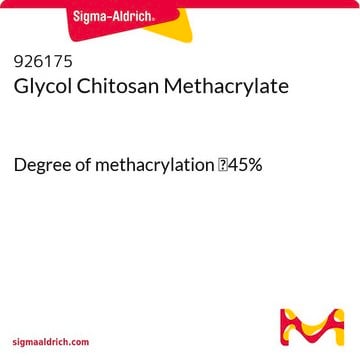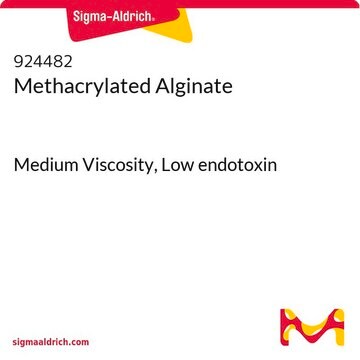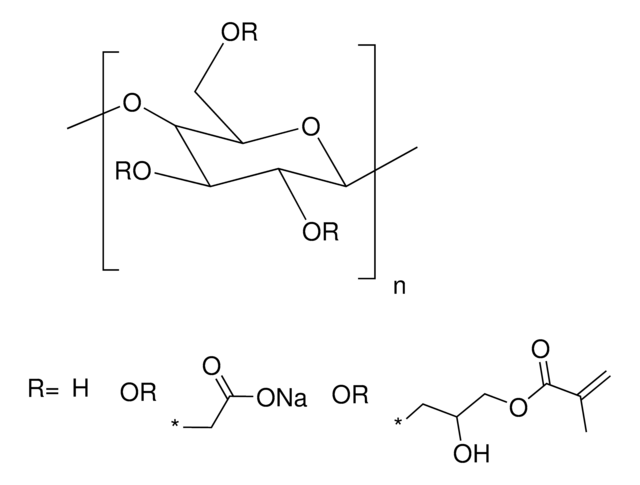926167
Chitosan glycidyl methacrylate
Degree of methacrylation ~20%
Sinónimos:
Chitosan acrylate, Chitosan methacrylate, Methacrylate grafted chitosan, Methyl methacrylate modified chitosan
About This Item
Productos recomendados
Nivel de calidad
temp. de almacenamiento
2-8°C
cadena SMILES
CO[C@H]1[C@@H](O)[C@@H](N)[C@H](O[C@H]2[C@@H](O)[C@@H](NC(C)=O)[C@H](C)O[C@@H]2CO)O[C@@H]1COCC(O)COC(C(C)=C)=O
Categorías relacionadas
Aplicación
Código de clase de almacenamiento
11 - Combustible Solids
Clase de riesgo para el agua (WGK)
WGK 3
Punto de inflamabilidad (°F)
Not applicable
Punto de inflamabilidad (°C)
Not applicable
Certificados de análisis (COA)
Busque Certificados de análisis (COA) introduciendo el número de lote del producto. Los números de lote se encuentran en la etiqueta del producto después de las palabras «Lot» o «Batch»
¿Ya tiene este producto?
Encuentre la documentación para los productos que ha comprado recientemente en la Biblioteca de documentos.
Nuestro equipo de científicos tiene experiencia en todas las áreas de investigación: Ciencias de la vida, Ciencia de los materiales, Síntesis química, Cromatografía, Analítica y muchas otras.
Póngase en contacto con el Servicio técnico







